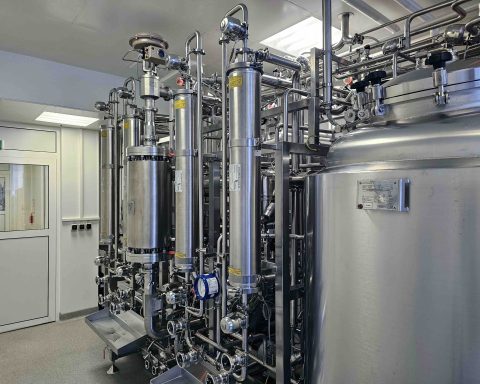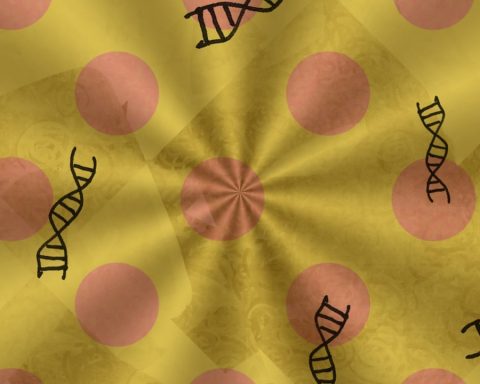Microencapsulation is an advanced delivery system which involves storage of particles of an active agent in a protective shell made of polymeric compounds to form particles sized in the micrometer to millimeter range. The main objective of the process is to protect the active agent in uncertain conditions and prevent its degradation.
Within the pharmaceutical industry, the technique is used to prevent enzymatic degradation of active agents when entered in the body. It is also one of the major benchmarks for controlled release dosage forms. Microencapsulation has evolved as a replacement for sustain release patches owing to dosage convenience possessed by microencapsulation products.
| Most Widely Used Microencapsulated Drugs | ||
| Drug | Purpose | Product |
| Acetaminophen | Taste masking | Tablet |
| Aspirin | Taste masking, sustained release, reduce gastric irritation & incompatibilities | Tablet or capsule |
| Islet of Langerhans | Sustained normalization of Diabetic condition | Injectable |
| Menthol | Reduction of volatility | Lotion |
| Potassium chloride | Reduced gastric irritation | Capsules |
| Vitamin A palmitate | Stabilization to oxidation | Dry powder |
| Salicylic acid | Target particular area | Microcrystal |
On a commercial scale, spray coating and gel particles are most widely used processes as of now, but in coming years various lab scale processes are expected to enter commercial business opening new opportunities for manufacturers to offer enhanced products. The technique will surely evolve with time and offer sophisticated encapsulants as food and pharmaceutical industry narrow downs the product characteristics and probiotic agents evolve. A lot of research is still required to understand the compatibility of various materials with various food matrices and polymers for coatings.
Microencapsulation also has wide applications in the paint industry. Products such as acrylics, powder coatings, urethane paints, are key product types currently used with microencapsulation.
Solvent compatibility test and binder compatibility test are performed to understand the compatibility between the ingredients used in the products. A solvent compatibility test is done by microencapsule wall in the solvent. Solvents such as toluene, n-butyl acetate, ethanol, water, and many more are used to perform the test. The formulation stability test is performed to determine the phase stability of the paint. If the microcapsules are incompatible with the system, the paint will go under phase separation. Resins such as alkyd, polyester, and acrylic are the three water-based resins used.
Microencapsulation of solids & liquids is a groundbreaking micro packaging technology which has opened new marketing scope for performance apparels such as top wear and bottom wear. Also, the packaging industry has ample amount of penetration. Scratch samples of perfumes on boxes and magazines are already popular in the market and has been a successful marketing strategy for leading perfume manufacturers to attract new customers which adopt microencapsulation.
Microencapsulation also has application in thermo-chromic & photo-chromic apparels/fabrics. These fabrics change colour as an effect of change in temperature in the surrounding. Within the fabric, only the microencapsulated colourings are responsive to thermal changes and light sensitive changes. Currently, microencapsulated fabrics are limited to safety apparels, linger and swimwear, but in coming years the scope is expected to widen in coming years.
Considering regional markets, North America currently has a well-established platform for microencapsulation industry pertaining to higher demand for end products. Preference towards healthy diet and premium products incorporating the technology is expected to drive regional demand. On the other hand, countries such as China, Japan, and India is expected to show lucrative
The major companies in the market are involved in strategic partnerships with end-user industries such as pharmaceuticals, home & personal care, agrochemicals, food additives and many more. High investment in research & development in order to improve the efficiency of existing characteristics is likely to be a key factor for the market growth. AnaBio introduced new microencapsulation technology which involves liquid creatine in the systems such as sports drinks, gummies, and gels. Previously, creatine, when added in water, decreased the effectiveness in the body. To overcome the challenge, the encapsulation system was designed to protect the molecules and reduce its instability in water. The development made by AnaBio is expected to increase the adoption of creatine in sports nutrition products.
Microencapsulation has been evolving in terms of materials used for making the systems. Within the cosmetics industry, the trend of using functional silk polypeptides for encapsulating lipophilic substances. Silk polypeptides are likely to form highly stable films on the skin surface, lipophilic liquids and hydrophilic liquids. Earlier, it was shown that vegan silk can be assembled by diffusion at the oil-water system to form water-soluble microcapsules. Recently, a new and highly efficient process has been introduced for encapsulation of lipophilic materials. To make these oil capsules, beta carotene and perfume mixture was added to aqueous silk polypeptide with continuous treatment with dispersing equipment. Continuous treatment caused the formation of shear forces which in the end formed oil droplets in the solution.
Additionally, just like lipophilic substances, a hydrophilic substance such as vitamin A, green tea extract, and many more have vital functionality in cosmetic formulations. These highly sensitive materials can be encapsulated using silk polypeptides shielding them from degradation. On the contrary, to the previous method, the new technique is capable of producing highly stable capsules.
This technique is suitable for shielding anti-aging products, antioxidants, vitamins, and other API’s. Microencapsulation not only prevents early degradation but also increases the bioavailability of the molecules when required under certain biological conditions. To end with, microencapsulation is a vital process when it comes in handling sensitive molecules in pharmaceuticals, food & beverages, Fragrances, textiles, agrochemicals, and various other industries.
Author Bio
Sanket Sanjay Sapate is working as a research analyst in Adroit Market Research. He has a graduation degree in Bachelor of Pharmacy and a post-graduate degree in Master of Business Administration (Marketing).







